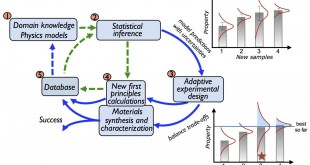In 1911, a Dutch scientist discovered a class of materials which, at temperatures near absolute zero, could conduct electricity with no resistance and therefore zero loss of power. These materials called Superconductors have unique properties including, Zero resistance to direct current; Extremely high current carrying density; Extremely low resistance at high frequencies; Extremely low signal dispersion; High sensitivity to magnetic field; Exclusion of externally applied magnetic field; Rapid single flux quantum transfer; and Close to speed of light signal transmission.
Conventional superconductors consist of simple metals, such as niobium, lead, or mercury, which become superconducting when cooled to below a characteristic “critical temperature” close to absolute zero—4.2 K in the case of mercury. These became known as Low Temperature Superconductor (LTS) materials. Since the 1960s a Niobium-Titanium (Ni-Ti) alloy has been the material of choice for commercial superconducting magnets. More recently, a brittle Niobium-Tin intermetallic material has emerged as an excellent alternative to achieve even higher magnetic field strength.
Superconductor Based Equipment provides many benefits. Superconductivity brings sensitivity, accuracy and performance advantages beyond the theoretical limits of conventional electronics technology. Additionally, in large scale superconducting systems, when all the necessary cryogenic components are included, size and weight reductions of 50-70% are achieved versus conventional equipment.
Zero resistance and high current density have a major impact on electric power transmission and also enable much smaller or more powerful magnets for motors, generators, energy storage, medical equipment and industrial separations. Superconductors could also pave the way for “almost lossless storage” of energy, meaning we wouldn’t have to worry about the degradation that plagues today’s batteries. We could move electricity from a renewable energy farm on one side of a continent to another without losing any energy in the process.
Low resistance at high frequencies and extremely low signal dispersion are key aspects in microwave components, communications technology and several military applications. Low resistance at higher frequencies also reduces substantially the challenges inherent to miniaturization brought about by resistive, or I 2R, heating. The high sensitivity of superconductors to magnetic field provides a unique sensing capability, in many cases 1000x superior to today’s best conventional measurement technology.
Besides being ultrasensitive detectors of magnetic fields, superconductors also excel in the detection of extremely faint electromagnetic signals, for example signals originating in outer space. SQUID detectors hold the record in sensitivity and are used in many a radioastronomy observatory worldwide
A room-temperature superconductor could accelerate the advent of quantum computers, which could lead to breakthroughs in everything from artificial intelligence to healthcare. There’s also the possibility we could the technology to build magnetic levitation trains.
In spite of the revolutionary potential of this superconducting material, the difficulty in producing engineered materials and in maintaining low operating temperatures precluded practical applications for many decades. In 1986, physicists discovered a family of copper-containing compounds that superconduct at temperatures as high as 134 K (–139°C)—a phenomenon known as high-temperature superconductivity whose origins remain one of the biggest mysteries in science. More recently, researchers have found a family of high-temperature iron-based superconductors, and there are myriad other exotic superconductors as well.
Recent theoretical predictions have shown that a new class of materials of superconducting hydrides could pave the way for higher-temperature superconductivity. Researchers at the Max Planck Institute for Chemistry in Germany teamed up with University of Chicago researchers to create one of these materials, called lanthanum superhydrides, test its superconductivity, and determine its structure and composition. Using advanced technology at UChicago-affiliated Argonne National Laboratory, the team studied a class of materials in which they observed superconductivity at temperatures of about minus 23 degrees Celsius (minus 9 degrees Fahrenheit, 250 K)—a jump of about 50 degrees compared to the previous confirmed record.
The only catch was that the material needed to be placed under extremely high pressure—between 150 and 170 gigapascals, more than one and a half million times the pressure at sea level. Only under these high-pressure conditions did the material—a tiny sample only a few microns across—exhibit superconductivity at the new record temperature. Though the superconductivity happened under extremely high pressure, the result still represents a big step toward creating superconductivity at room temperature—the ultimate goal for scientists to be able to use this phenomenon for advanced technologies.
Researchers have been on the hunt for a superconductor that would work at around room temperature, which they consider to be 25 degrees Celsius (77 degrees Fahrenheit) — and according to the patent application, Navy researcher Salvatore Cezar Pais thinks he’s figured it out. In Feb 2019, U.S. Patent and Trademark Office made public a Navy scientist’s patent application for a room-temperature superconductor — and if the device works as described, it could radically change everything from transportation to computing. Pais’ application describes a wire consisting of a metal coating over an insulator core. An electromagnetic coil surrounds the wire, and when activated by a pulsed current, this coil causes a vibration that allows the wire to act as a superconductor at room temperature, according to the application.
According to the “Superconductors: Global Markets to 2022” report by Research and Markets, the Global Market for Superconductivity Applications Should Reach $8.8 Billion by 2022 from $6.1 Billion in 2017 at a CAGR of 7.5%
Military Benefits of Superconductor Based Equipment
Applications development serves to demonstrate the dramatic benefits of superconductivity.
The Defense Science Board was tasked to study the military system applications of superconductors. The Task Force found a number of superconductivity applications that could result in significant new military capabilities, including electronics and high power applications. In particular, superconducting materials could enable significant military improvements in:
- Magnetic Field Sensors with greatly increased sensitivity for improved detection and identification capability. The magnetic field sensor with LTS materials could lead to improved mine detectors.
- Passive Microwave and Millimeter-wave Components enabling increased detection range and discrimination in clutter. This could lead to development of MMW radar would embody HTS materials in its filters, transmission lines, phase shifters and possibly the reflector
- Staring Infrared Focal Plane Array sensors incorporating superconducting electronics permitting significant range and sensitivity increases over current scanning IR sensors. This could lead to improved Space Surveillance System through development of high resolution and low power consumption IR focal plane array by combining detectors using existing extrinsic silicon materials with signal processors employing LTS materials.
- Wideband Analog and Ultra-Fast Digital Signal Processing for radar and optical sensors
- High Power Motors and Generators for ship and aircraft propulsion leading to: decreased displacement; drive system flexibility; increased range; or longer endurance on station
- Magnets/Energy Storage for high power microwave, millimeter-wave or optical generators (e.g., free electron hypervelocity projectiles for anti-annor weapons and close-in ship defense weapons. It could enable development of Hypersonic Tank Gun and electromagnetic projectile launcher using LTS materials. This launcher should achieve hypersonic velocities capable of penetrating reactive armor and modern composite armor.
- Magnetohydrodynamic (MHD) Propulsion enabling ultra-quiet drives for submarines, torpedoes, and surface ships.
Coalition of Commercial Application of Superconductors (CCAS) members involved in the end-use, manufacture, development and research of superconductor based systems, products and related technologies advised the following applications in military.
Mine Protection
As steel hulled ships at sea move through the magnetic field of the earth they develop a low level magnetic charge which can be used as a homing signature in mine warfare. Most naval vessels are therefore equipped with large copper degaussing coils running around the ship which are used to “neutralize” the magnetic signature. Superconducting degaussing coils are 20% the weight of copper based coils as they carry higher currents at lower voltages which translate into smaller footprints and improved efficiency.
High Temperature Superconductor (HTS) coils were retrofitted on the guided-missile destroyer USS Higgins (DDG 76) in 2008 and have performed extremely well in sea trials since that time. Use of this demonstrated superior and potentially life-saving technology should be retrofitted on all current Navy vessels and incorporated into all new construction.
Electric Power Distribution:
High Temperature Superconducting (HTS) power cables have significantly higher power density capability than copper counterparts, thus providing weight and size savings and making room for other war fighting equipment on board Navy vessels. Bridging various loads and sources of electric power with HTS cables will ensure uninterrupted power with minimal waste. HTS cables also offer tunable power density by adjusting the operating temperature. With investments in research and development, the HTS technology advancements that are under development for utility power grid applications can be extended to defense. CCAS recommends that the Administration and the Congress continue funding ongoing programs and new proposals in HTS cables and related cryogenic technology development for military use.
Siemens Proves Feasibility Of Superconducting Electric Propulsion
Using experiments and digital simulations, Siemens’ eAircraft said it has proved the feasibility of a high power-density superconducting generator that could be used in a hybrid-electric propulsion system for future short-haul commercial aircraft. The milestone comes as Siemens conducts laboratory tests of the 2-megawatt SP2000 conventional, non-superconducting electric motor that will power Airbus’ E-Fan X hybrid-electric regional aircraft demonstrator in 2021.
Radar
Superconductor electronics can dramatically enhance anti-ship missile defense radars. Emerging threats include sea-skimming missiles that reflect very small fractions of the radar signal. The challenges to radar receivers are that they must distinguish these small echoes from the huge background clutter of waves, rain, jammers and mountains on the shore in real time.
Superconductivity enables the highest dynamic range digitizers and the smallest digits are essential to detect the most elusive threats. High dynamic range superconductor-based electronics provide the most advanced technology and simplify the receiver, thereby making these life-saving sensors and detectors affordable for a wide variety of Navy ships. CCAS recommends that programs in support of such major technology advances and military advantages should be expanded as in combat situations settling for second best is not good enough.
Communications
Superconductors offer the unique advantages of ultra-low signal dissipation and distortion as well as intrinsic (quantum) accuracy. These advantages combine to enable what researchers with the US Army have called the “most significant change to satellite communications in 30 years”.
Superconducting analog filters have been installed in over 10,000 cellular phone telephone base stations and, in an industry where reliability and uptime are essential, these filters have proven their advantages in increased range and enhanced call handling and processing capability. Military signal communications is conducted at much higher frequency and is primarily digital.
Over the past decade, HTS filters have come into widespread use in cellular communications systems. They enhance signal-to-noise ratios, enabling reliable service with fewer, more widely-spaced cell towers. As the world moves from analog to all digital communications, LTS chips offer dramatic performance improvements in many commercial and military applications.
The revolution under development, funded by the US Government and in part by commercial ventures, is to take advantage of the intrinsic linearity and quantum accuracy of superconductors to produce the world’s best analog-to-digital converter. This would enable the digitization of a wide band of signals without the need for much slower and error prone analog pre-processing. As a result, significant portions of the system, which usually add weight, volume, cost and distortion, would be completely eliminated. Software could then be used to manipulate digital data resulting in compatibility of all protocols and an effective exceptionally high speed, error-free “universal” system. Significant progress has been made and demonstrated in satellite communications links with the incorporation of a superconducting integrated circuit containing about 11,000 Josephson junctions on a chip smaller in size than half a penny. There is no other way to effect such high frequency, very high speed, all digital communications. CCAS recommends continued support for this critical technology.
 International Defense Security & Technology Your trusted Source for News, Research and Analysis
International Defense Security & Technology Your trusted Source for News, Research and Analysis


